Conditions for photography haven’t been great around Canmore in the last couple of weeks. We’ve enjoyed unseasonably warm temperatures for January and no recent snowfalls to freshen up the “old-looking” snow we have.
So, I concluded I should travel further afield to higher elevations and areas with more snow. Yesterday, accompanied by Kevin McCormick I went west to Field, British Columbia. Field is located about an hour from here via the Trans-Canada Highway, 30 minutes past Lake Louise. Field is known as a railroad town, a depot for Canadian Pacific Railroad. The town is located in Yoho National Park and and also hosts the area administrative offices for Parks Canada. Most importantly for our purposes, it’s situated on the other side of the Continental Divide with greater accumulations of snow and some excellent photo sites.
Our first stop was Natural Bridge, a unique rock which has been gradually carved out over time by the powerful Kicking Horse River to resemble a bridge, with a variety of waterfalls flowing around it. Despite there being little waterflow, it looks spectacular in winter.
This first picture was taken just downstream of the bridge, in an area with open water, ice along the shoreline and copious amounts of clean, fresh snow.
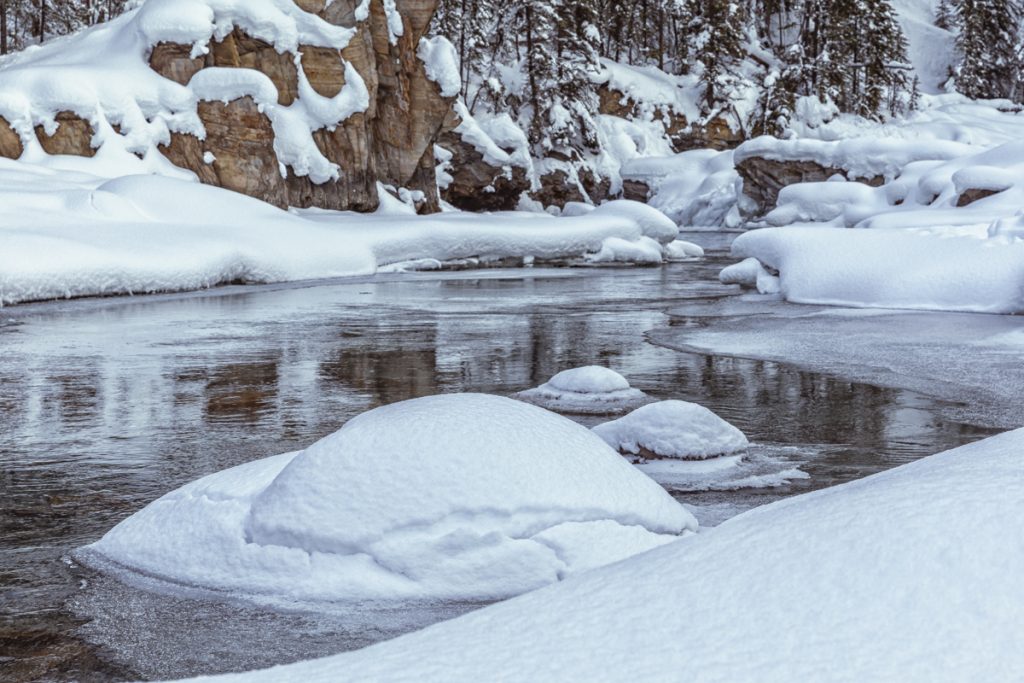
Before descending to the river level, I took this picture from the bridge, looking down the Kicking Horse River. It’s a pretty scene with Mount Deville visible in the background. That’s Kevin down there, sizing up his next photograph.
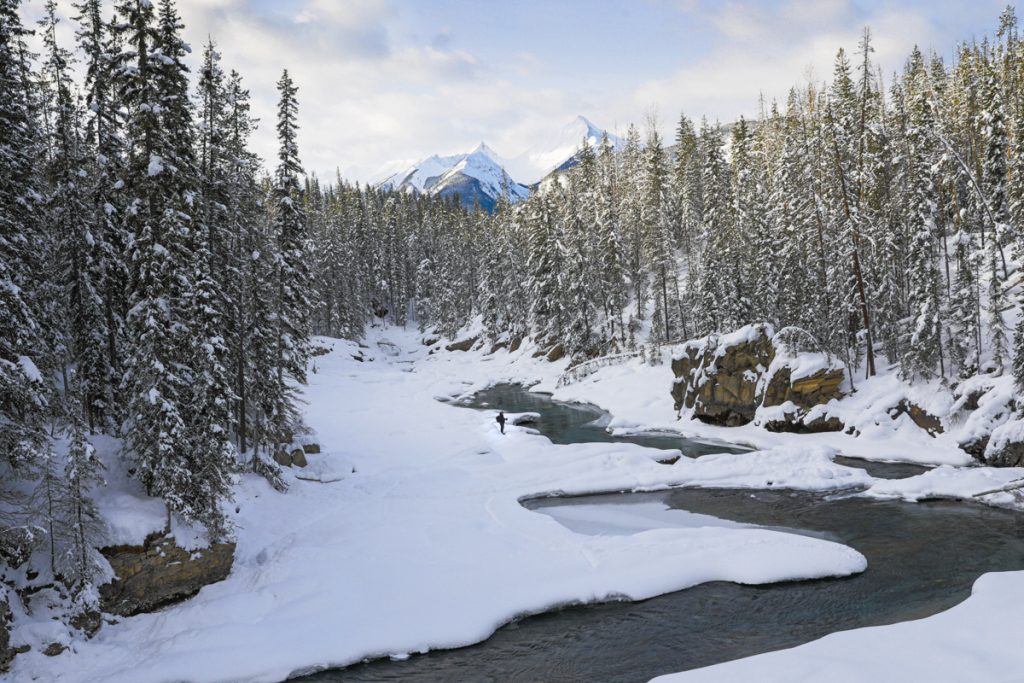
We spent quite a while down there taking pictures and just enjoying the surroundings. I took this next picture, looking back toward the Natural Bridge, and the opening where the water flows through. The flow of water is a trickle in comparison to the raging torrent that blasts through that opening in the spring and even in summer.
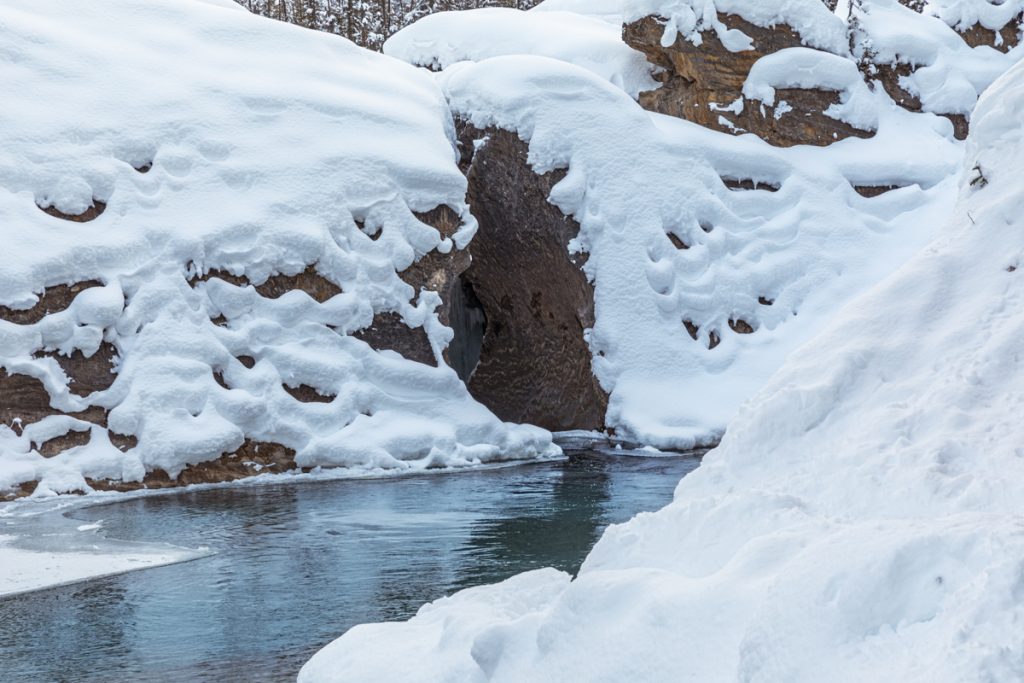
This next picture features the water in three states, ice, snow and liquid. That water is brutally cold. The only thing preventing it from freezing is its brisk movement.
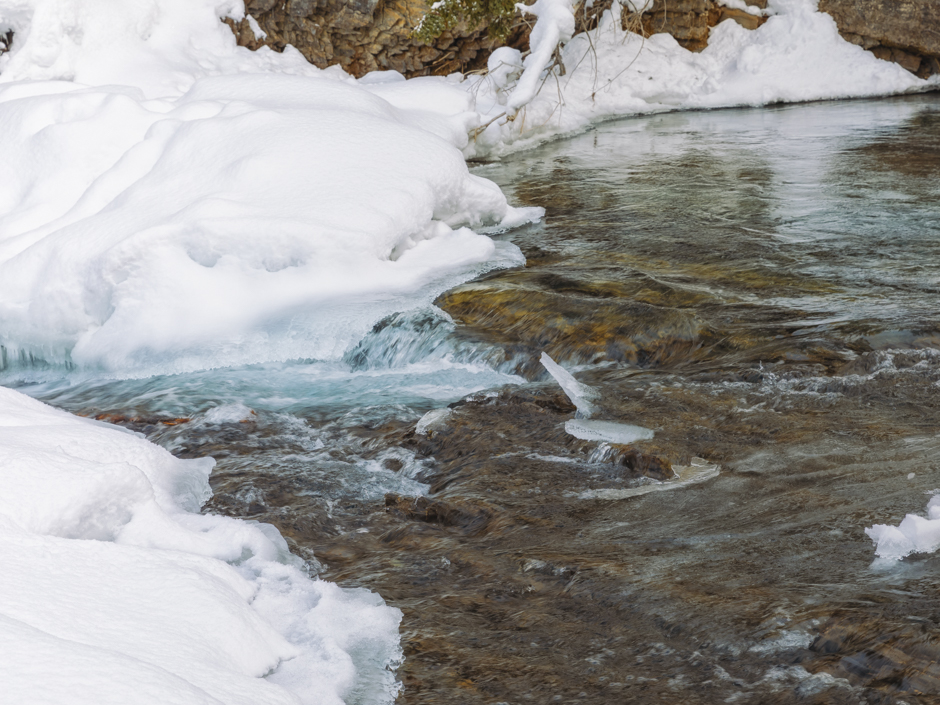
We then moved on to our second site for the day, Emerald Lake Lodge. It’s a short drive, just 10 minutes away. This first picture features Cilantro’s, a bistro on the lakeside a short walk down the hill from the main lodge. The water in the foreground is a small finger of the lake on its south side. You can get an idea of the snowfall in the area by the accumulation on the restaurant’s roof.
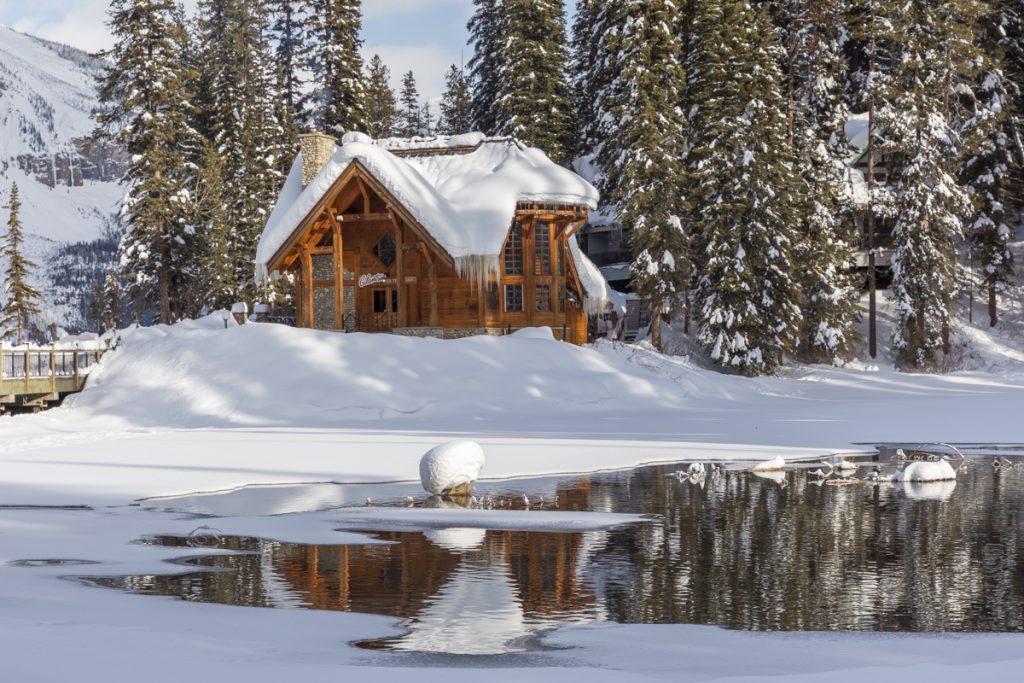
Business at the lodge is down this year for obvious reasons and this old store is closed. In addition to selling mementos and some clothing, it’s where to go to rent cross-country skis and snowshoes in winter and a canoe in the summer. For now, it’s snowbound.
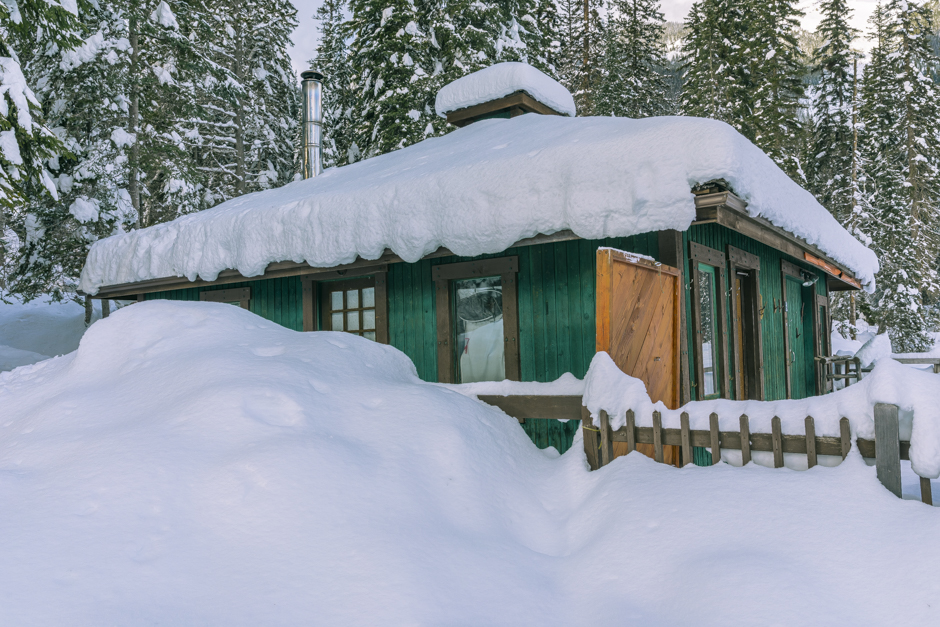
This is another view across the lake to Cilantro’s. It’s a portrait orientation, offering a better view of its surroundings. The bridge on the left is the only vehicle access to the main lodge. That’s Emerald Peak in the background and spot in the centre of the water, creating ripples is a mallard duck. With his head down, he’s modelling his 1957 “duck’s ass” haircut. I didn’t intend him to pose this way, that happened just as I clicked open the shutter.
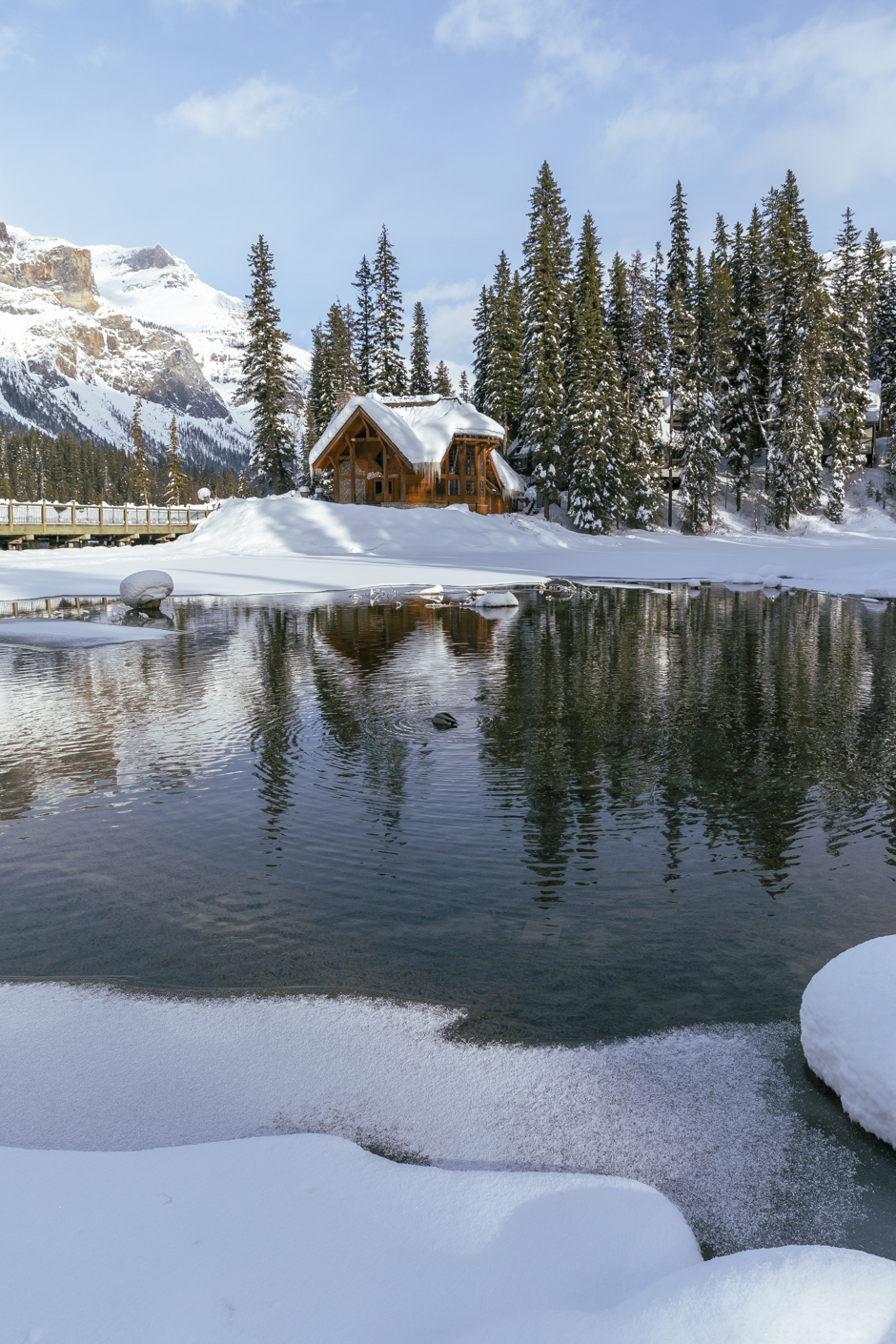
If you haven’t seen it, those red canoes look spectacular on the emerald coloured water of the lake in summer, amid the grandeur of the surrounding mountains. See for yourself? (second last photograph) https://www.shotsbypeter.com/blog/?p=9446
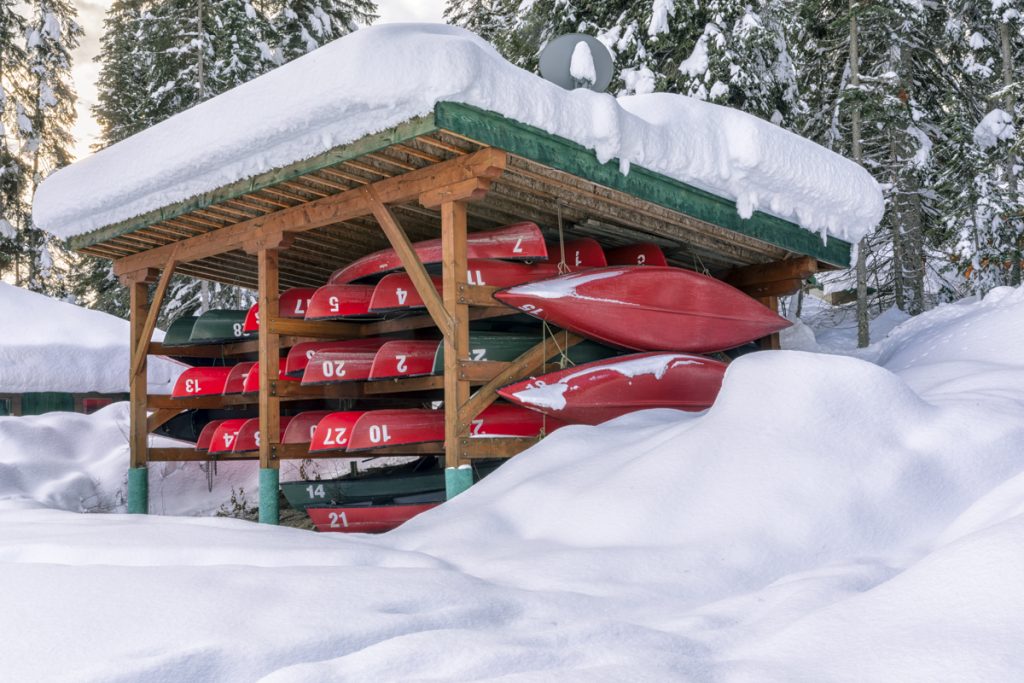
Our last stop for the day was the Town of Field itself. We walked along its streets and managed to find quite a few photo-worthy subjects. Soon after examining a community bulletin board outside the Post Office, where we read about plans to renovate a local church, we came upon the real article. What a beautiful setting with Mount Stephen as a backdrop.
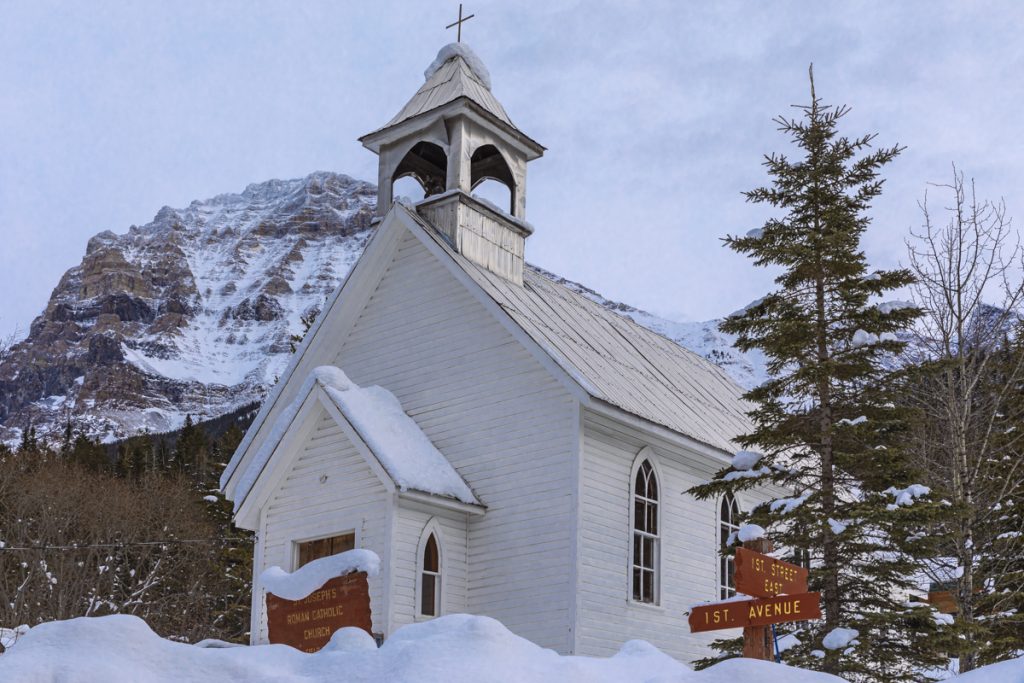
This is an old log cabin, still serving as someone’s home. It’s very rustic and an interesting photography subject. I looked for some information on it online, but nothing came up. I’m curious to know a little more of its history.
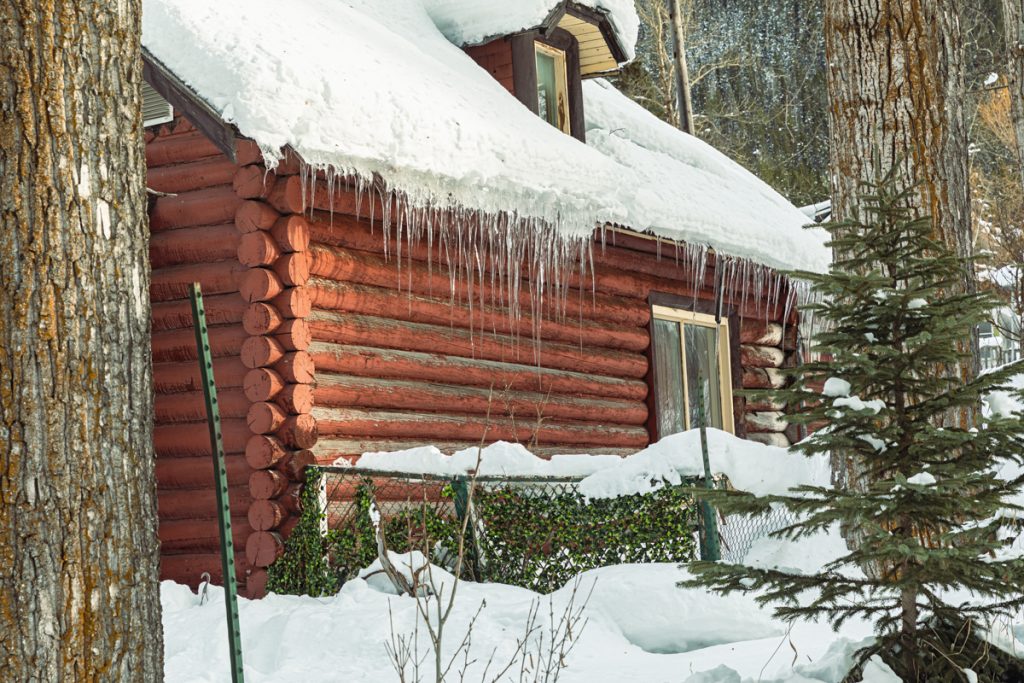
My last shot before departing was this one looking east along the transcontinental rail line. Just a few kilometres down the track are the famed Spiral Tunnels, completed in 1909 to help get the CPR’s trains over the Kicking Horse Pass. If you’re not familiar with this chapter of Canada’s railroading history, have a glance here (good article)…https://www.pc.gc.ca/en/pn-np/bc/yoho/culture/kickinghorse/visit/spirale-spiral
I prepared this picture resemble those found in CPR’s archival photos from that time.
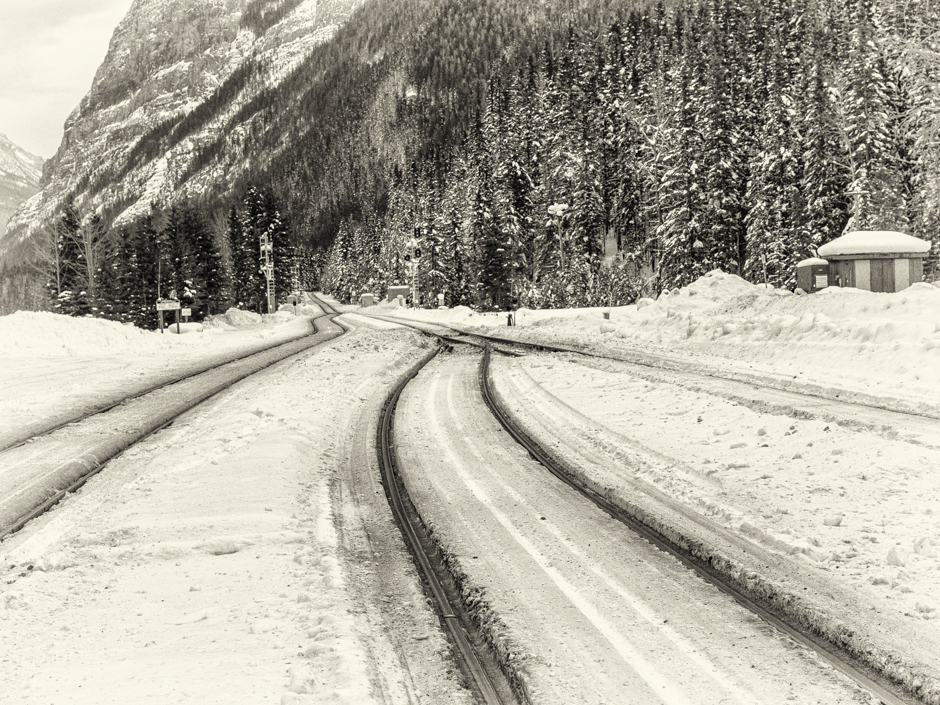
Thanks for sticking with me; a little long post than normally. I hope you enjoyed.
